Abstract
1. The pulmonary surface properties of foetal rabbits were studied after delivery by Caesarean section at 26-30 days and after normal delivery at term (31 days).
2. Quasi-static pressure—volume curves were defined for the lungs and the surface properties of the same lungs were further studied both by the bubble-stability method and by means of a surface balance and trough. Results given by each method are compared and discussed.
3. At the 26th day of gestation the pulmonary surface properties, characteristic of the animal at term, were not yet present. These properties were first evident on the 28th day.
4. A period of 16 min intense prenatal asphyxia on the 28th day of gestation failed to produce a change in pulmonary surface properties.
Full text
PDF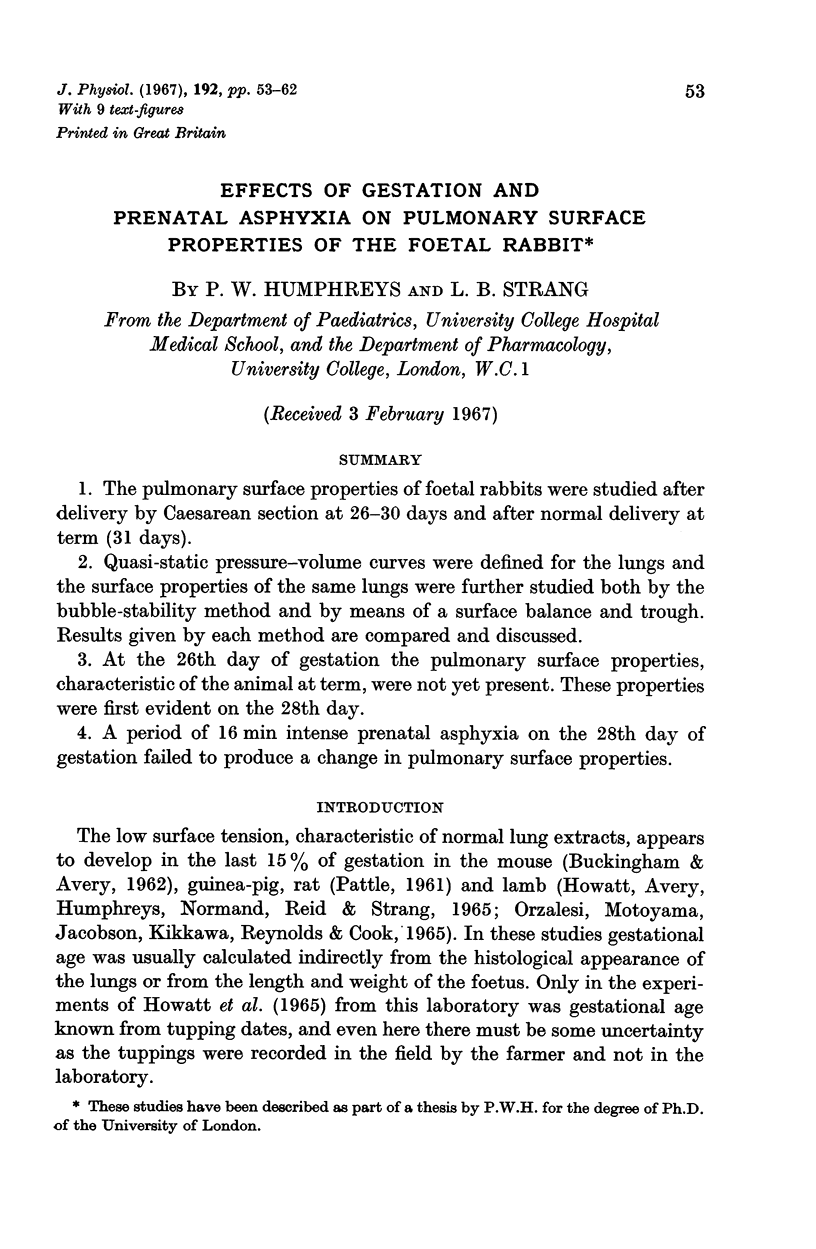
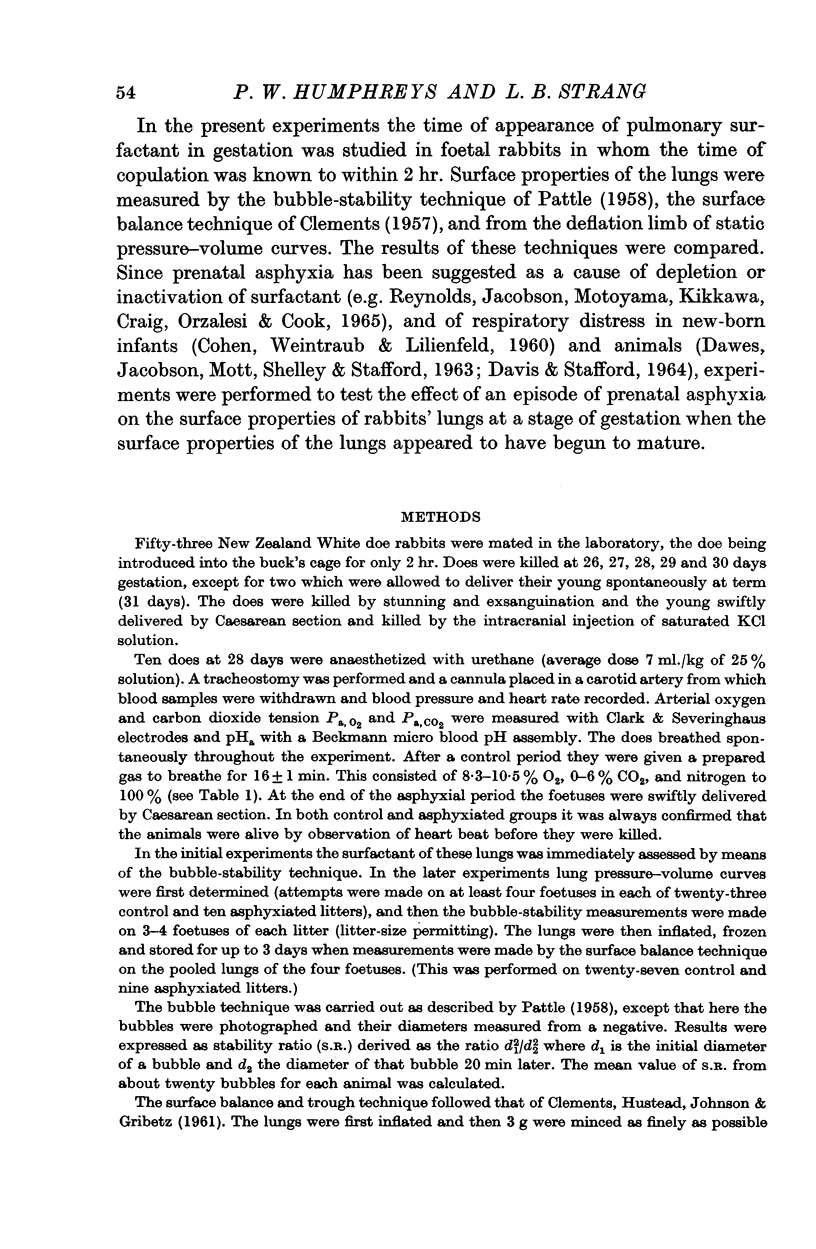
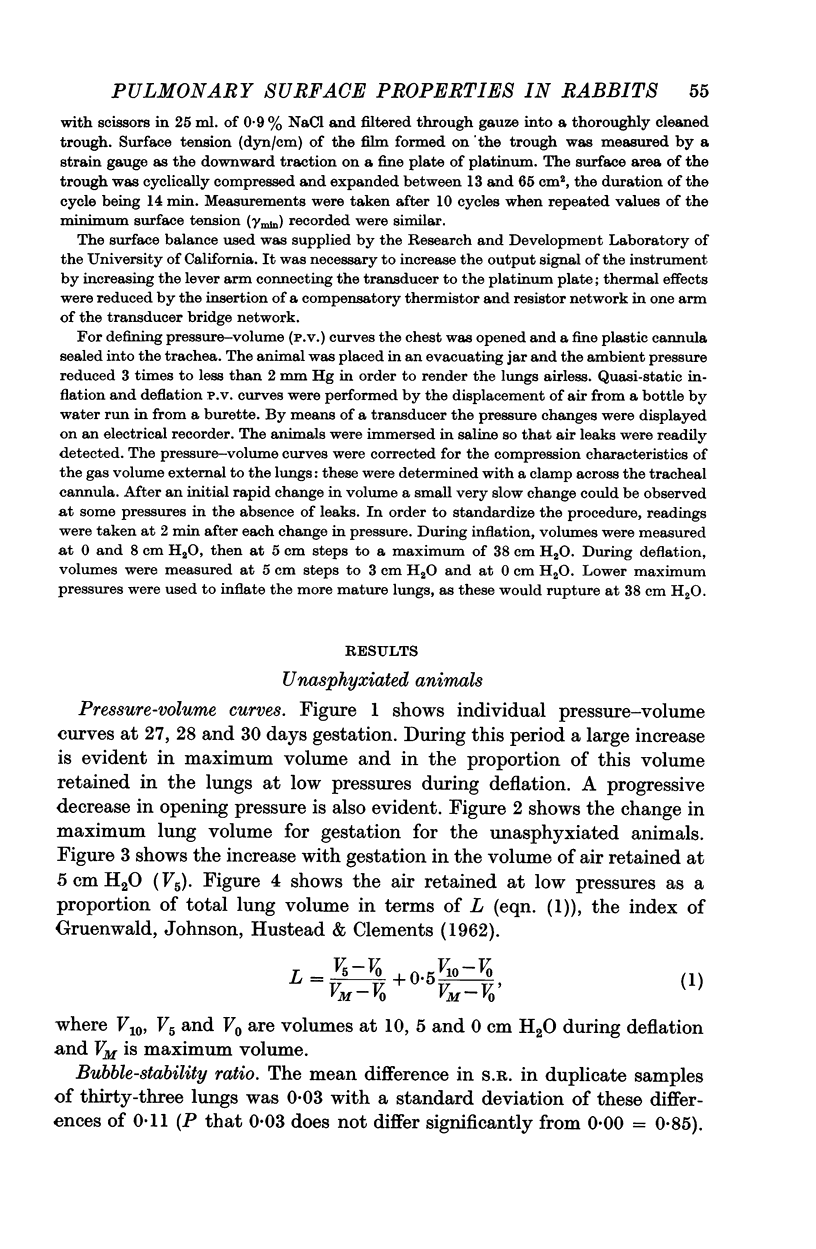
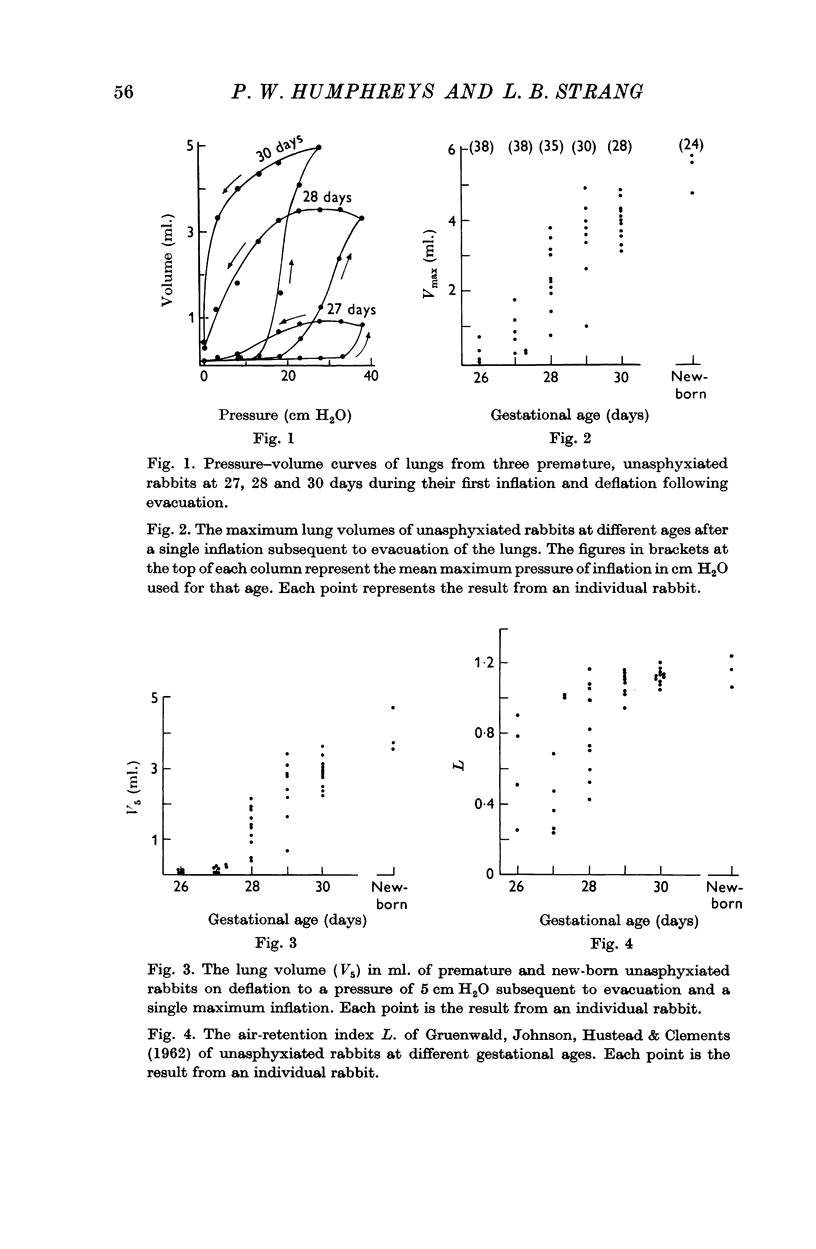
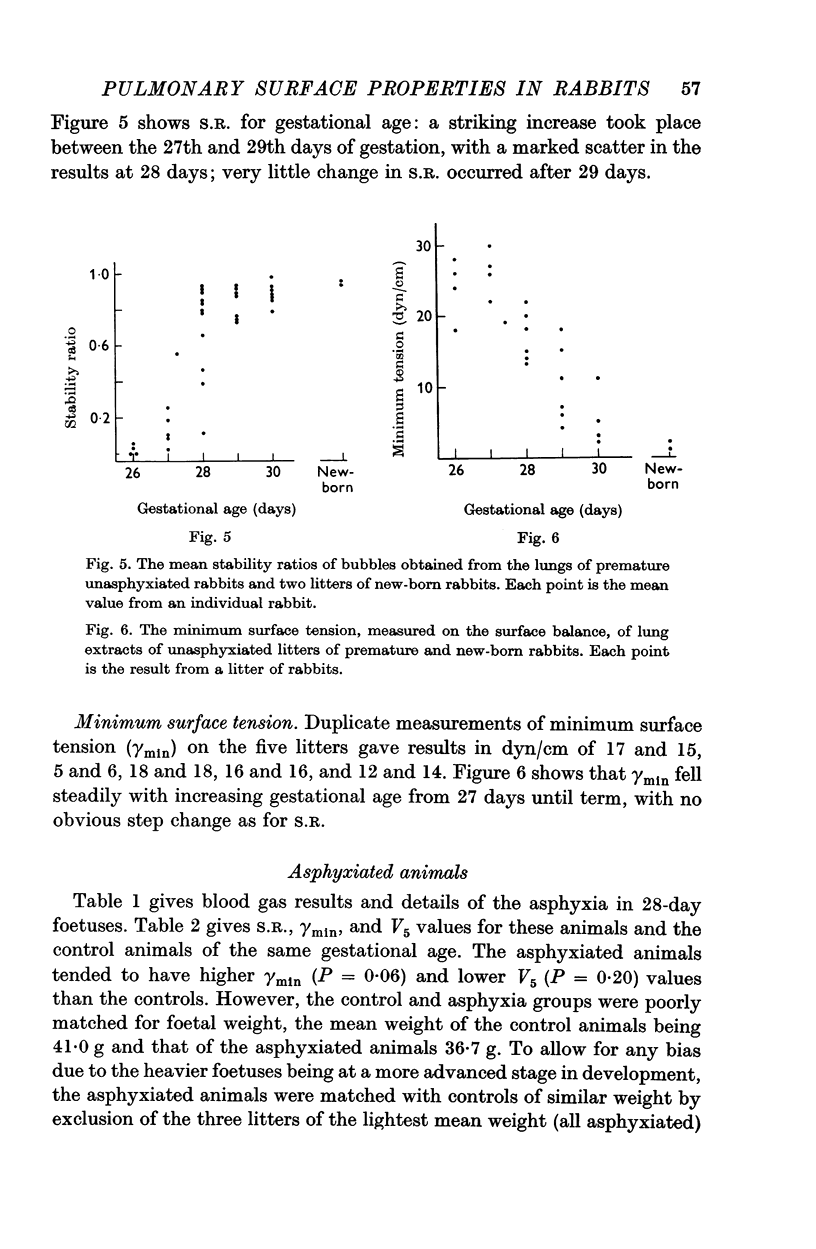
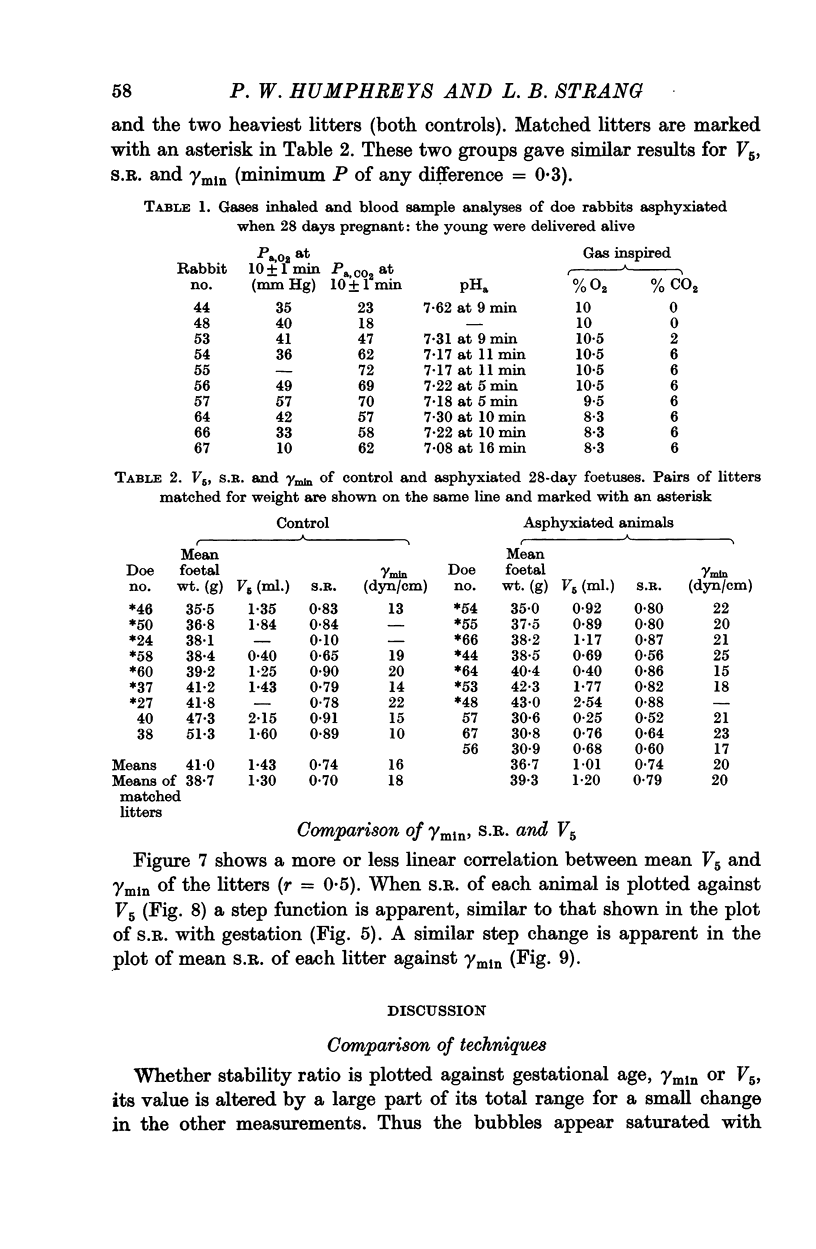
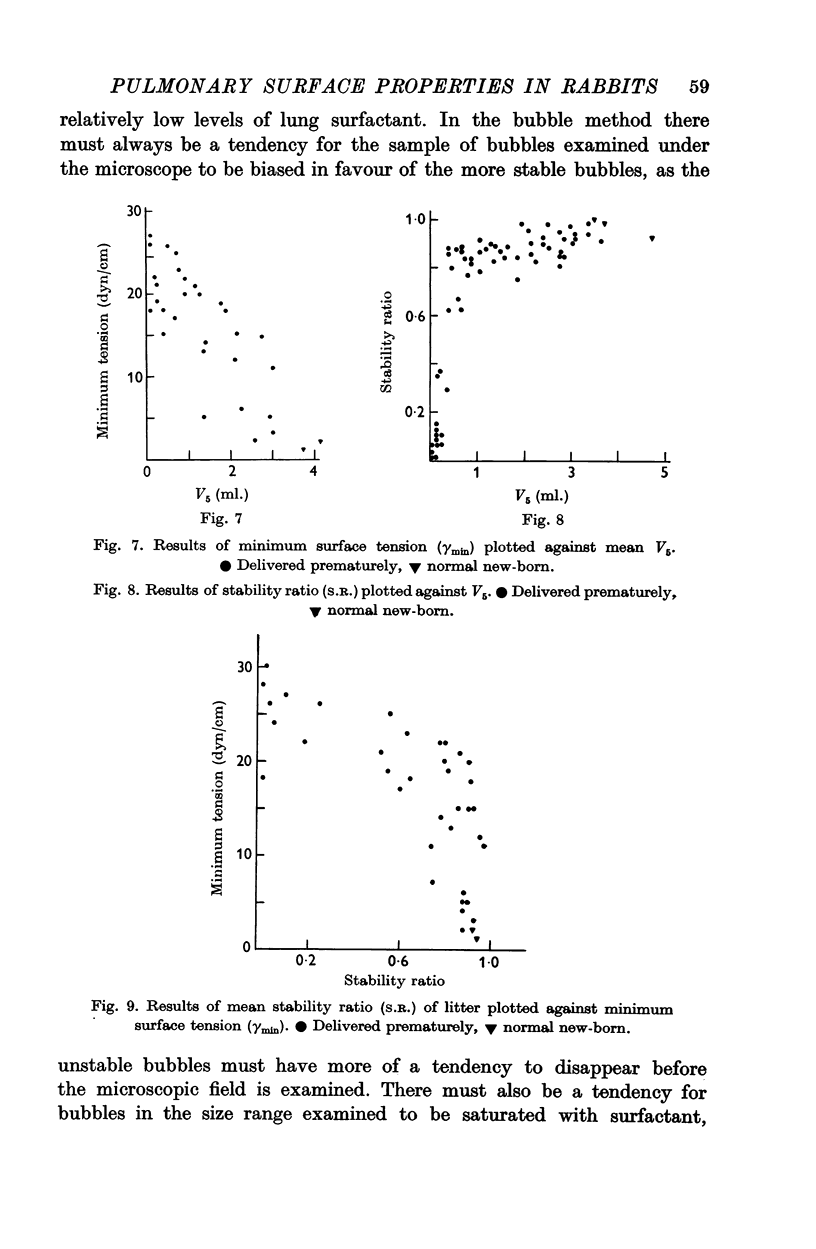
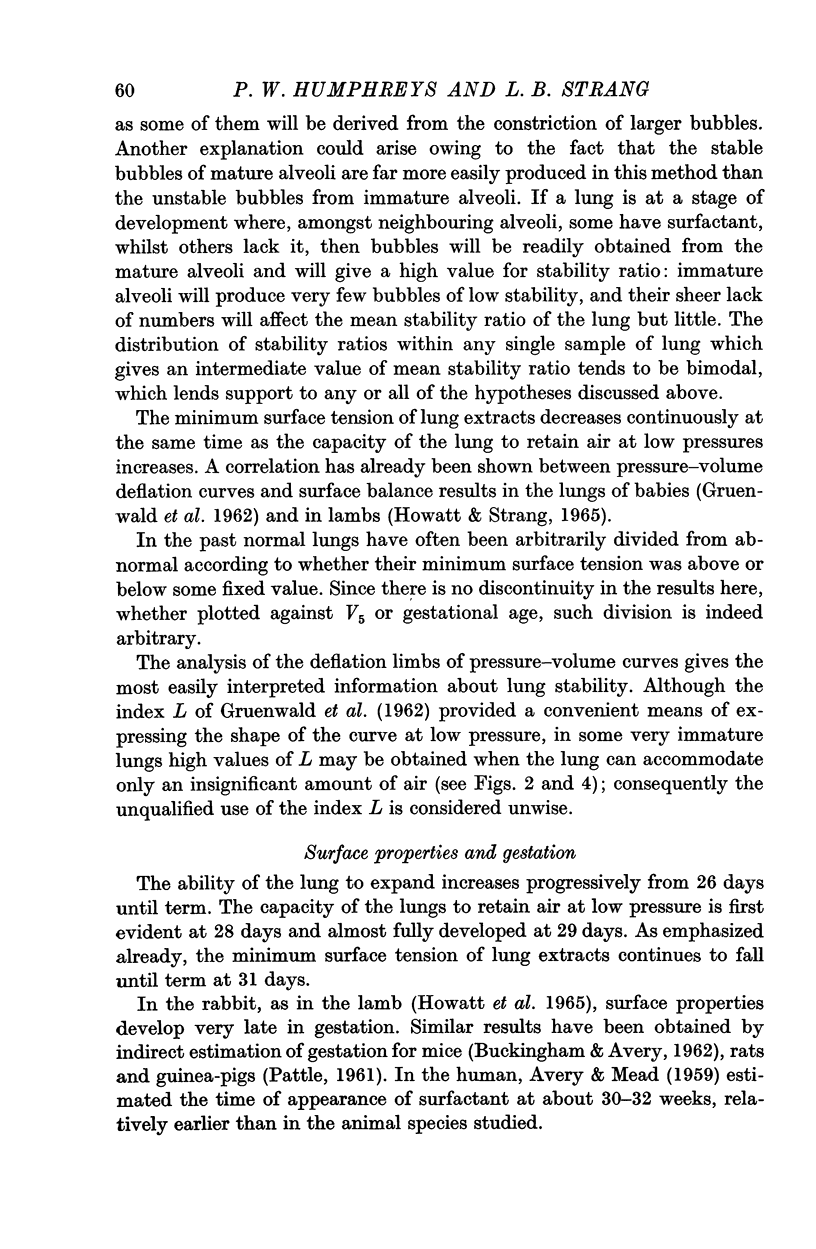
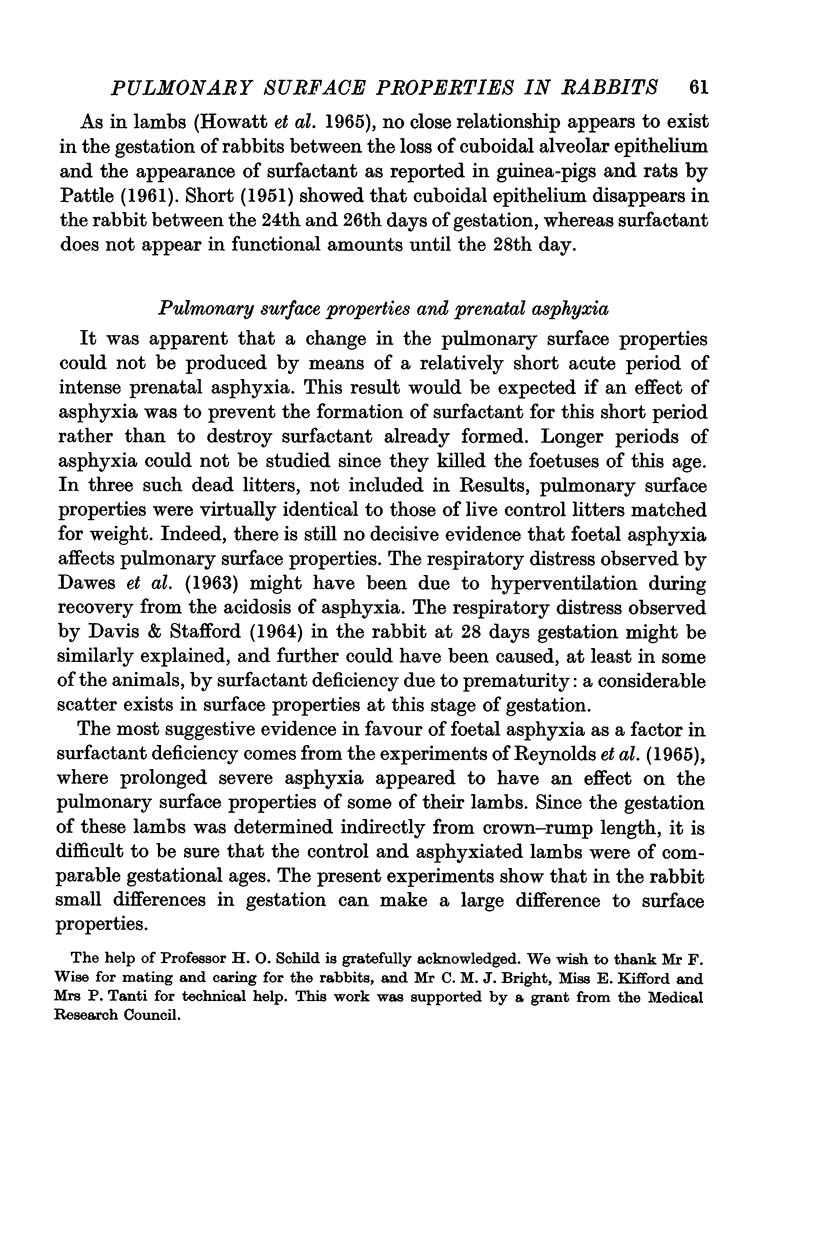
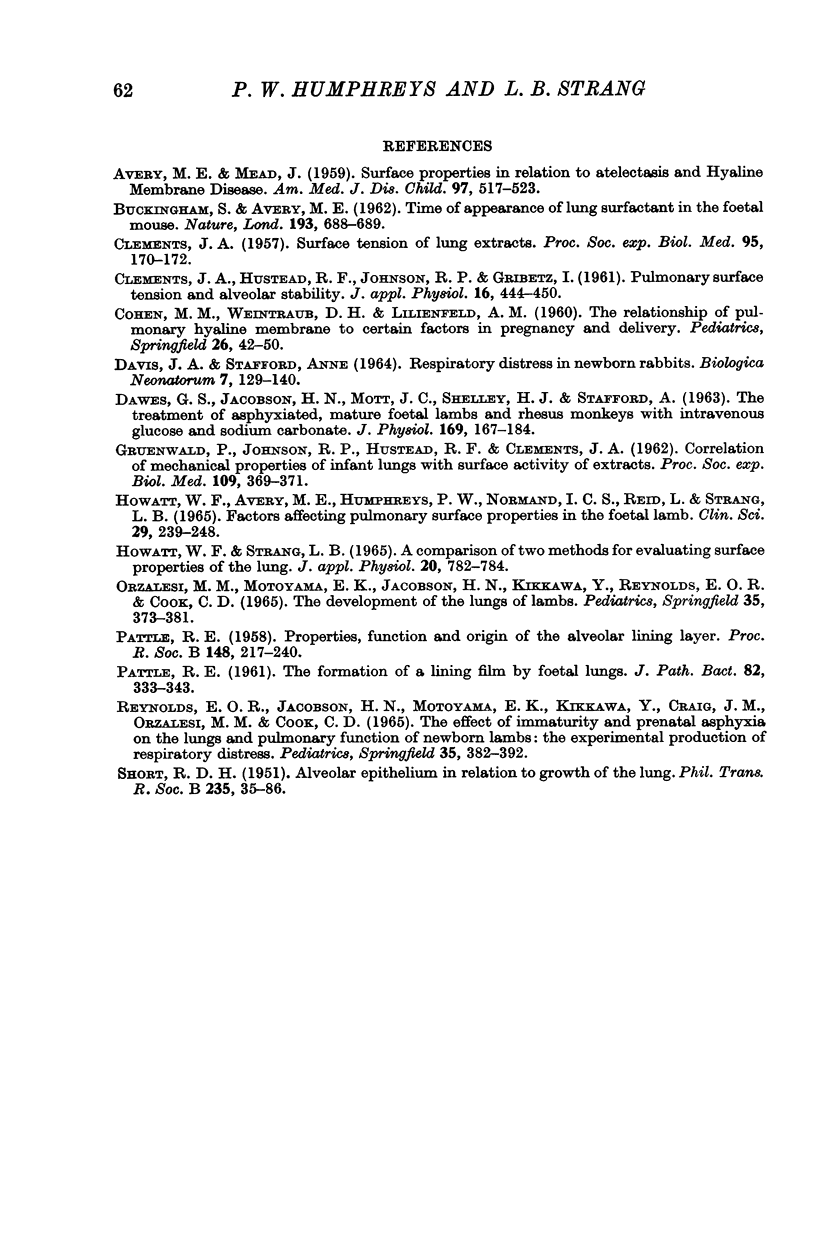
Selected References
These references are in PubMed. This may not be the complete list of references from this article.
- AVERY M. E., MEAD J. Surface properties in relation to atelectasis and hyaline membrane disease. AMA J Dis Child. 1959 May;97(5 Pt 1):517–523. doi: 10.1001/archpedi.1959.02070010519001. [DOI] [PubMed] [Google Scholar]
- BUCKINGHAM S., AVERY M. E. Time of appearance of lung surfactant in the foetal mouse. Nature. 1962 Feb 17;193:688–689. doi: 10.1038/193688a0. [DOI] [PubMed] [Google Scholar]
- CLEMENTS J. A., HUSTEAD R. F., JOHNSON R. P., GRIBETZ I. Pulmonary surface tension and alveolar stability. J Appl Physiol. 1961 May;16:444–450. doi: 10.1152/jappl.1961.16.3.444. [DOI] [PubMed] [Google Scholar]
- CLEMENTS J. A. Surface tension of lung extracts. Proc Soc Exp Biol Med. 1957 May;95(1):170–172. doi: 10.3181/00379727-95-23156. [DOI] [PubMed] [Google Scholar]
- COHEN M. M., WEINTRAUB D. H., LILIENFELD A. M. The relationship of pulmonary hyaline membrane to certain factors in pregnancy and delivery. Pediatrics. 1960 Jul;26:42–50. [PubMed] [Google Scholar]
- DAVIS J. A., STAFFORD A. RESPIRATORY DISTRESS IN NEWBORN RABBITS. Biol Neonat. 1964;7:129–140. doi: 10.1159/000239917. [DOI] [PubMed] [Google Scholar]
- DAWES G. S., JACOBSON H. N., MOTT J. C., SHELLEY H. J., STAFFORD A. THE TREATMENT OF ASPHYXIATED, MATURE FOETAL LAMBS AND RHESUS MONKEYS WITH INTRAVENOUS GLUCOSE AND SODIUM CARBONATE. J Physiol. 1963 Nov;169:167–184. doi: 10.1113/jphysiol.1963.sp007248. [DOI] [PMC free article] [PubMed] [Google Scholar]
- GRUENWALD P., JOHNSON R. P., HUSTEAD R. F., CLEMENTS J. A. Correlation of mechancial properties of infant lungs with surface activity of extracts. Proc Soc Exp Biol Med. 1962 Feb;109:369–371. doi: 10.3181/00379727-109-27205. [DOI] [PubMed] [Google Scholar]
- Howatt W. F., Avery M. E., Humphreys P. W., Normand I. C., Reid L., Strang L. B. Factors affecting pulmonary surface properties in the foetal lamb. Clin Sci. 1965 Oct;29(2):239–248. [PubMed] [Google Scholar]
- Howatt W. F., Strang L. B. A comparison of two methods for evaluating surface properties of the lung. J Appl Physiol. 1965 Jul;20(4):782–784. doi: 10.1152/jappl.1965.20.4.782. [DOI] [PubMed] [Google Scholar]
- ORZALESI M. M., MOTOYAMA E. K., JACOBSON H. N., KIKKAWA Y., REYNOLDS E. O., COOK C. D. THE DEVELOPMENT OF THE LUNGS OF LAMBS. Pediatrics. 1965 Mar;35:373–381. [PubMed] [Google Scholar]
- PATTLE R. E. Properties, function, and origin of the alveolar lining layer. Proc R Soc Lond B Biol Sci. 1958 Feb 18;148(931):217–240. doi: 10.1098/rspb.1958.0015. [DOI] [PubMed] [Google Scholar]
- REYNOLDS E. O., JACOBSON H. N., MOTOYAMA E. K., KIKKAWA Y., CRAIG J. M., ORZALESI M. M., COOK C. D. THE EFFECT OF IMMATURITY AND PRENATAL ASPHYXIA ON THE LUNGS AND PULMONARY FUNCTION OF NEWBORN LAMBS: THE EXPERIMENTAL PRODUCTION OF RESPIRATORY DISTRESS. Pediatrics. 1965 Mar;35:382–392. [PubMed] [Google Scholar]


